
This resource includes tasks aligned to 4.OA.5.
- Subject:
- Mathematics
- Material Type:
- Activity/Lab
- Formative Assessment
- Author:
- Drew Polly
- Date Added:
- 07/25/2020

This resource includes tasks aligned to 4.OA.5.
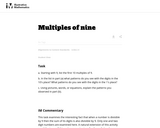
This is a task from the Illustrative Mathematics website that is one part of a complete illustration of the standard to which it is aligned. Each task has at least one solution and some commentary that addresses important asects of the task and its potential use. Here are the first few lines of the commentary for this task: Stating with 9, list the first 10 multiples of 9. In the list in part (a) what patterns do you see with the digits in the 10's place? What patterns do ...

This parent guide supports parents in helping their child at home with the 4th grade Math content. Within the folder you will access Parent Guide PDFs in FIVE Languages: Arabic, English, Hindi, Spanish, and Vietnamese to help on-going communication with caregivers.

This resource accompanies our Rethink 4th Grade Math course. It includes ideas for use, ways to support exceptional children, ways to extend learning, digital resources and tools, tips for supporting English Language Learners and students with visual and hearing impairments. There are also ideas for offline learning.

This standard asks students to generate a pattern from a given rule and identify features of the given pattern.
Students will be given a rule and will create patterns that consist of repeated sequences of shapes or growing sequences of designs.
Students will then analyze other groups patterns.

CK-12 Algebra Explorations is a hands-on series of activities that guides students from Pre-K to Grade 7 through algebraic concepts.

This short video and interactive assessment activity is designed to teach second graders an overview of simple figure patterns.

This short video and interactive assessment activity is designed to give fourth graders an overview of simple figure patterns.

This short video and interactive assessment activity is designed to teach third graders an overview of simple figure patterns.

On-line interactive, video, and practice activities and accompanying hands-on collaborative activity are designed to teach fourth graders an overview of simple figure patterns.
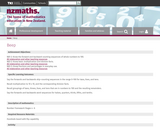
Students recall multiplication to 10 x 10 and the corresponding division facts.
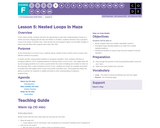
In this online activity, students will have the opportunity to push their understanding of loops to a whole new level. Playing with the Bee and Plants vs Zombies, students will learn how to program a loop to be inside of another loop. They will also be encouraged to figure out how little changes in either loop will affect their program when they click `Run`.
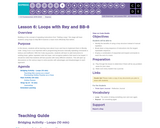
Building on the concept of repeating instructions from "Getting Loopy," this stage will have students using loops to help BB-8 traverse a maze more efficiently than before.

This short video and interactive assessment activity is designed to teach third graders about choosing the multiples of a given number up to 12.
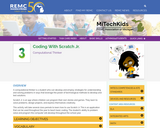
Scratch Jr. is an app where children can program their own stories and games. They learn to solve problems, design projects, and express themselves creatively.

This short video and interactive assessment activity is designed to teach fourth graders about finding and completing the number patterns.
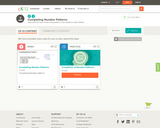
This short video and interactive assessment activity is designed to teach fourth graders about completion of number patterns.

Using the online interactive, students determine which numbers best complete a given pattern. Students
have the option to skip the problem or check their answer before submitting it. Their progress is tracked and shown above each problem.

This three-part example from Illuminations highlights different aspects of students' understanding and use of patterns as they analyze relationships and make predictions, as discussed in the Algebra Standard. This first part, Making Patterns, includes an interactive figure for creating, comparing, and viewing multiple repetitions of patterns. The interactive figure illustrates how students can create pattern units of squares, then predict how patterns with different numbers of squares will appear when repeated in a grid, and check their predictions. In the second part, Describing Patterns, examples of various ways students might interpret the same sequence of cubes are given. This illustrates the importance of discussing and analyzing patterns in the classroom. The third part, Extending Pattern Understandings, demonstrates ways in which students begin to create a 'unit of units,' or a grouping that can be repeated, and begin to relate two patterns in a functional relationship. e-Math Investigations are selected e-examples from the electronic version of the Principles and Standards of School Mathematics (PSSM). The e-examples are part of the electronic version of the PSSM document. Given their interactive nature and focused discussion tied to the PSSM document, the e-examples are natural companions to the i-Math investigations.

Using the online interactive, students create a pattern and find a number in the pattern. Students
have the option to skip the problem or check their answer before submitting it. Their progress is tracked and shown above each problem.